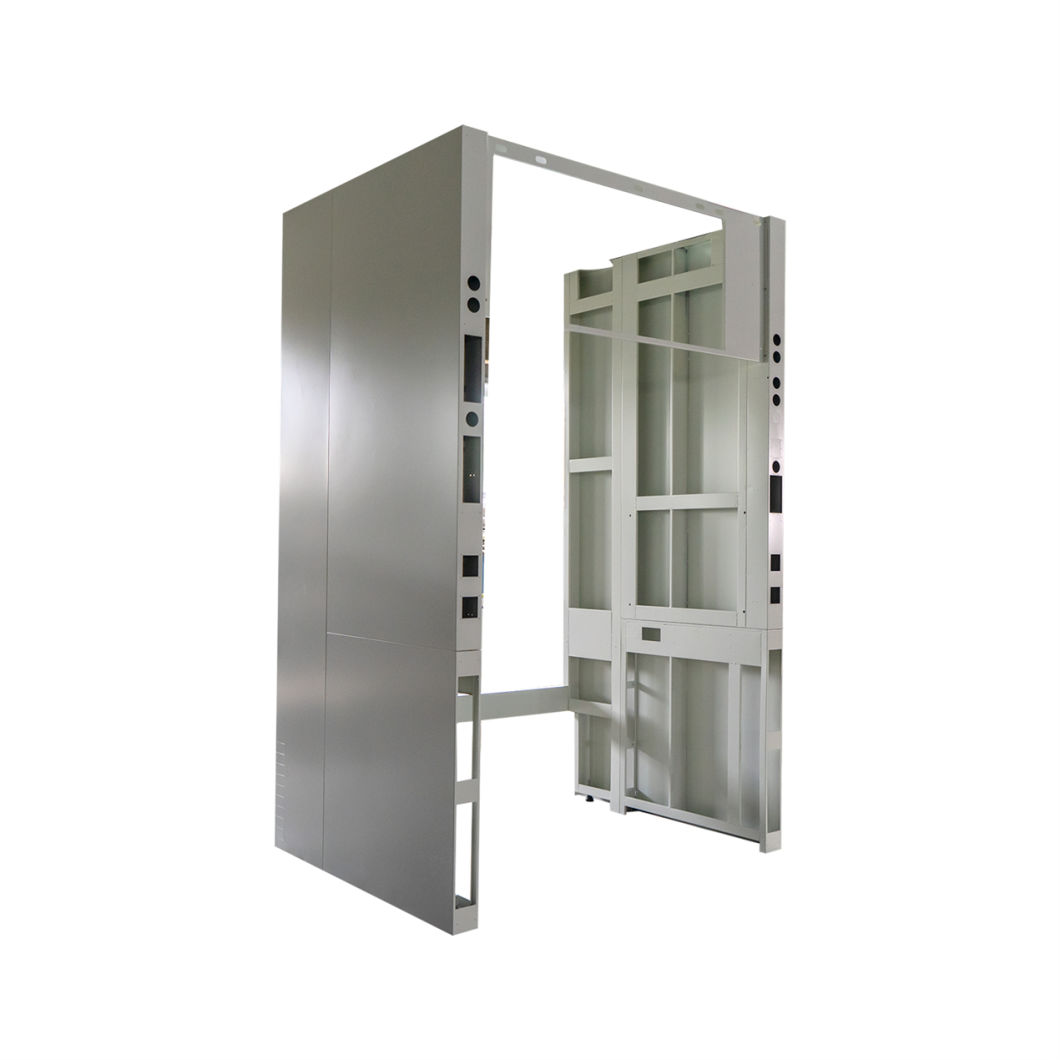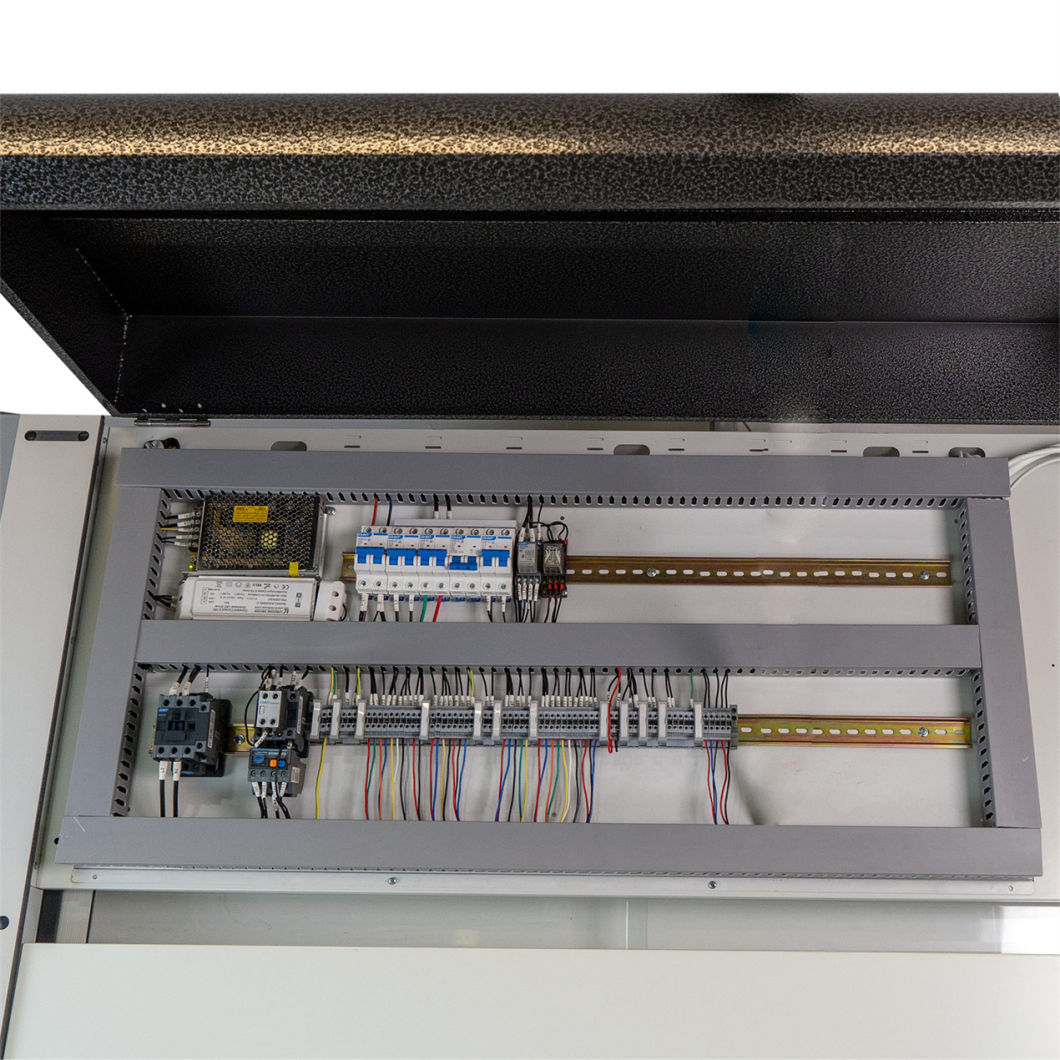Chengdu Ample Import And Export Co., Ltd. |
|
Primarily, a fume hood is somewhat of an elevated box, albeit with
some caveats. Perhaps the most important caveat is that when the
sash is raised (or widened), the work cabinet must be able to
maintain a safe perpendicular air speed, or face velocity, at the
imaginary plane that marks the interface between worker and working
surface. Face velocity correlates to the volumetric flow of air
that must be employed inside the hood to contain vapors before they
are ducted and exhausted. Although face velocities at 50 percent
sash height often exceed 100 fpm, some contemporary
high-performance cabinets can now safely run with face velocities
as low as 40 fpm, translating to great energy and cost savings by
minimizing volumetric flow.
In addition to improvements in airflow, performance, and
environmental impact, work cabinet surfaces have evolved to meet
and exceed rigorous measures against corrosion and degradation, and
to enable clean-up or wash-down. Standard cabinet surfaces are
often composed of seamless fiberglass construction to guard against
the collection of powders and entry of corrosive vapors into
hard-to-clean crevices. Additionally, mobile inserts molded of
composite or epoxy resin can aid containment and clean-up
| Model Specification | WJ-1500A | WJ-1500B | WJ-1800A | WJ-1800B |
| External dimensions of equipment(mm) | 1500(W)*1205 (D) *2400 (H) | 1800(W)*1205 (D) *2400 (H) | ||
| Dimension of works pace (mm) | 1260(W1)*780(D1) *1100 (H1) | 1560(W1)*780(D1) *1100 (H1) | ||
| Panel material | 20+6mm thick butterfly ceramics | |||
| Material of internal lining board | 5mm thick ceramic fiber board | |||
| Diversion structure | Lower air return | |||
| Control system | Button control panel (LCD panel) | |||
| PH value control | The medium is alkaline water solution; manual monitoring, and manual control through acid pump and alkali pump. | |||
| Input power | Three-phase five-wire 380V/50A | |||
| Current for air fan | Not over 2.8A(380V or 220V can be directly connected) | |||
| Maximum load of socket | 12 KW(total of 4 sockets) | |||
| Water tap | 1 set (remote control valve + water nozzle) | No | 1 set (remote control valve + water nozzle) | No |
| Water discharge way | Magnetic chemical pump strong discharge | |||
| Using environment | For non-explosion indoor use, within 0-40 degrees Celsius. | |||
| Applicable fields | Inorganic chemistry experiment; Food, medicine, electronics, environment, metallurgy, mining, etc. | |||
| Ways of Purification | Spray sodium hydroxide solution, no less than 8 cubic meters/hour | Spray sodium hydroxide solution.no less than 12 cubic meters/ hour | ||
| Ways of surface air speed control | Manual control (through the electric air valve to adjust the exhaust air volume or adjust the height of the moving door) | |||
| Average surface air speed | 0.6-0.8 m/s Exhaust air volume: 1420-1890m3/h (when door height h =500mm) | 0.6-0.8 m/s Exhaust air volume: 1760-2340m3/h (when door height h =500mm) | ||
| Speed deviation of surface air | Not higher than 10% | |||
| The average intensity of illumination | Not less than 700 Lux; Standard white and uv-free yellow LED lamps; The illumination is adjustable. | |||
| Noise | Within 55 decibels | |||
| Flow display | White smoke can pass through the exhaust outlet, no overflow. | |||
| Safety inspection | No spikes, edges; Charged body and the exposed metal resistance is greater than 2 mQ; Under 1500V voltage, no breakdown or flashover occurred for 1min test. | |||
| Resistance of exhaust cabinet | Less than 160 pa | |||
| Power consumption | Less than 1.0kw/h (excluding power consumption of fans and external instruments) | Less than 1.2kw/h (excluding power consumption of fans and external instruments) | ||
| Water consumption | Less than 3.2L/ h | Less than 4.0L/ h | ||
| Performance of wind compensation | With a unique wind compensation structure, the volume of the wind will not cause turbulence in exhaust cabinet and will not directly blow to the staff (need to connect to the air compensation system of the laboratory) | |||
| Air volume regulating valve | 315mm diameter flanged type anti-corrosion electric air flow regulating valve (electric contact actuator) | |||
To the user, the most important feature of a fume hood is the sash.
The sash, or sash panels, are the pieces of transparent
material-usually glass-that are located at the front of the fume
chamber and are movable. The sash position has a huge impact on the
airflow within the fume chamber, but the sash is also a barrier
between the fume chamber and your breathing zone. It offers
protection from other hazards, such as fire and explosion. Using
the sash properly is one of the most important things you can do,
not only to protect yourself, but to also save energy.
The next component to focus on is the baffles. These are normally
located in the rear of the hood, and along with the back wall,
create the exhaust plenum. The exhaust plenum has the lowest
pressure within the hood, so the air naturally wants to flow there.
There are usually slots or holes in the baffles to allow the air to
flow into the exhaust plenum. There are many baffle designs, and
some perform better than others. The baffles are the most critical
component in fume hood performance, so users need to pay close
attention to them.
The lower airfoil is also a critical component. The sash normally
closes onto this airfoil. It is the nose of the work surface. There
are many designs, but typically, they are constructed of metal and
are designed to create a stream of air that sweeps across the work
surface rearward toward the baffles




As a best practice, the lower the sash handle is, the safer the user
will be. Hoods should never be used at full open-this is for setup
only. Working with an 18-inch opening on a vertical sash is far
safer than working at full open.
When you stand in front of the sash opening, your body acts like an
airplane wing; the air being drawn into the hood flows over your
shoulders and around your sides, creating a low-pressure zone
directly in front of you. This low-pressure area in front of you
will attempt to pull air from inside the hood outward,
creating a loss of containment and possible exposure. This is
why you always work at least six inches behind the sash to keep
chemicals out of the area of reverse flow.
Next, extend your hands and arms into the hood and move them about.
What are they doing to the airflow? Picture yourself in a canoe,
your arms are the paddles, and just as the paddles can displace
large amounts of water, your arms can displace large amounts of air
creating turbulence and disrupting the airflow. This is a recipe
for loss of containment. When working in the hood, move your hands
and arms slowly and deliberately.
6 Questions to Ask When Buying a Fume Hood:
-Which chemicals will you use within the hood?
-Is a ducted or ductless hood best suited to your needs and
available space?
-Where will you place the fume hood in the lab? Consider workflows,
access to external exhaust systems, and competing air patterns.
-What size fume hood will best suit your needs? Be sure to consider
what (if any) equipment will be enclosed in the hood.
-Are any service fixtures or accessories such as airflow monitors,
electrical outlets, water, or gas fixtures required?
-Are base cabinets for acid, solvent, or non-chemical storage
required?